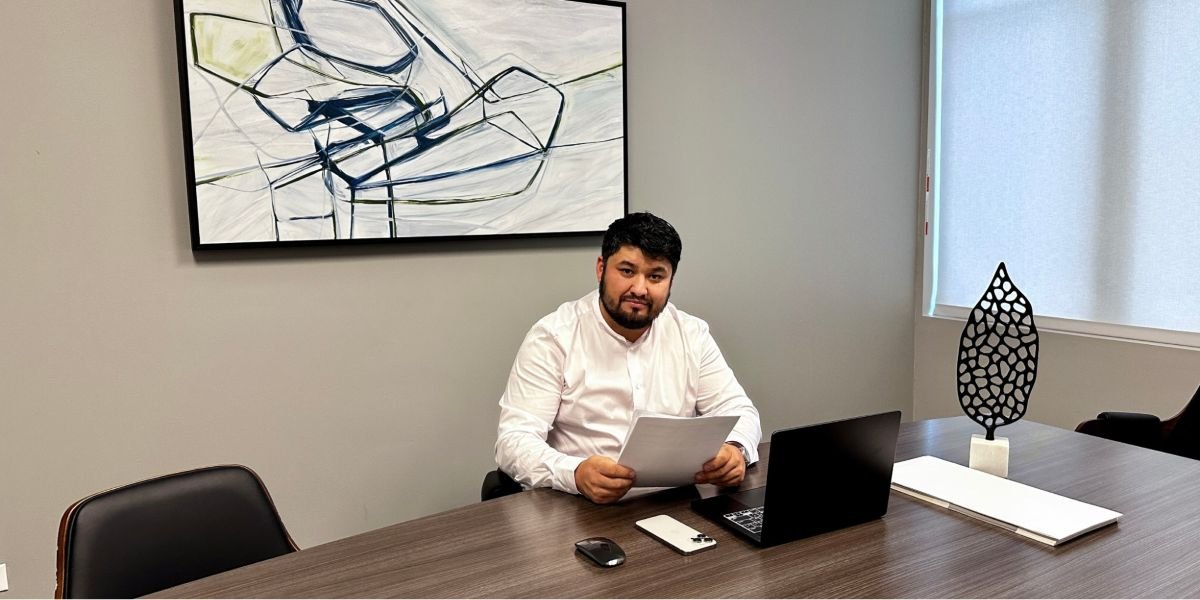How Tair Ablaiev’s Financial Flexibility Framework Aims to Support Business Growth
According to the Federal Reserve Bank of the United States, more than half of small enterprises shut down because of cash-flow gaps: funds get locked in inventory and receivables, depriving companies of resources for growth. Finance practitioner Tair Ablaiev has demonstrated that this trap can potentially become a growth driver. Since 2023, he has lived and worked in Chicago, where he helps businesses strengthen liquidity without relying solely on costly loans through precise analytics and “flexible” working-capital management.
Career Path: From Electronics to Fashion Retail
Ablaiev’s professional biography reflects an evolution from classic reporting to proactive cash-flow management.
From 2012 to 2016, while working at the Simferopol-based distributor ICOM (audio and video electronics) as finance manager, he proposed switching from quarterly planning to an hourly data cycle: POS sales automatically adjusted order volumes, and an algorithm ranked product categories by margin. Within eighteen months, this approach contributed to an 18 percent reduction in storage costs, with the freed-up capital reinvested into higher-profit lines.
His next role was at the wholesale supplier of construction materials, Amet-Khan Dzhemaliadinov (2015–2017). Here, Ablaiev introduced automatic control of overdue payments and optimized the payment schedule with suppliers. As a result, overdue debt declined by 35 percent, reducing reliance on expensive short-term loans.
In 2017, Ablaiev changed industries again, becoming head of sales at My Holidays. He implemented an adaptive pricing system that incorporated booking forecasts, online customer behavior, and currency fluctuations. The company saw improved profitability during the low season for the first time, alongside a 20 percent increase in repeat bookings.
“The pricing system developed by Tair allows us to adjust prices proactively, helping stabilize revenue and minimize cash gaps even in slower periods,” notes CEO Elvis Yakubovich Saitmemetov.
After concluding the corporate phase of his career, Ablaiev turned to entrepreneurship, opening three clothing boutiques in Simferopol (2020–2023). He refined his techniques in practice. A unified BI panel ranked models by sell-through speed and margin: fast-moving sizes were replenished early, while slow-moving items were phased out quickly. This led to a 40 percent increase in chain turnover, with write-offs remaining below 10 percent.
“Modern entrepreneurs benefit from data-driven decision-making—numbers often provide clearer insights than intuition alone,” Ablaiev observes.
The “Financial Flexibility” Methodology
Combining experience from electronics distribution to managing his own fashion retail, Tair Ablaiev developed the Financial Flexibility methodology. Its aim is to help businesses transform operational data into actionable insights for improved liquidity and steady growth.
- Continuous data stream. ERP and CRM systems update hourly, and the owner’s dashboard provides real-time visibility into product turnover speed, receivables aging, and potential cash gaps.
- ForeSight scenario forecasts. The analytics module evaluates potential external changes—from raw-material price spikes to sudden demand surges—and projects their impact on working capital and profit.
- Algorithmic allocation of funds. Surplus inventory, early-payment discounts, and short-term deposit opportunities are ranked by internal rate of return, potentially freeing up 10–15 percent of working capital within two quarters.
Businesses using this system have reported reductions in excess inventory by 20–30 percent, alongside decreased reliance on high-cost short-term loans.
Trucking Business: Field Test of the Concept
In 2023, after settling in Chicago, Ablaiev collaborated with Safiet Dzhemaliadinov, owner of the trucking company DSE Carriers Inc., as an external financial strategist. This Bolingbrook, Illinois-based family enterprise operates a fleet of thirty tractors and, like many regional carriers, faces working capital challenges due to delayed shipper payments against daily fuel and lease expenses.
Over twelve months, Ablaiev introduced a three-tier liquidity scheme:
- A 13-week cash-flow forecast that integrates data from TMS and electronic loggers, tracking empty-mile distance, unloading dwell time, and diesel expenses.
- A revised rate card incorporates a monthly-adjusted fuel surcharge, helping mitigate diesel-price volatility.
- Negotiated “quick-pay” terms—payments within seven days at a 1 percent discount—with key customers, reducing dependence on factoring.
After one year, DSE Carriers saw measurable improvements: Days sales outstanding fell from 42 to 34; factoring volume dropped by 25 percent, saving approximately $48,000 in fees. The current ratio improved from 1.00 to 1.22, and the freed-up $180,000 financed leases on two new tractors without bank credit, contributing to a roughly seven percent increase in annual fleet output.
“We had hunches about inefficiencies, but Tair’s analysis gave us concrete data to redirect resources effectively,” says owner Safiet Dzhemaliadinov. The weekly Fleet Cash Pulse report, developed by Ablaiev, is now a staple at operational meetings, ensuring alignment between logistics and accounting.

Photo Courtesy: Tair Ablaiev
Plans for the Future
The next phase involves partnering with Chicago-area credit unions. Ablaiev’s models could assist lenders in more accurately evaluating borrowers’ financial health before extending credit. This integration could expand the reach of financial flexibility tools beyond operations into the broader credit ecosystem.
Financial stability requires ongoing adaptation. Tair Ablaiev’s experience suggests that businesses equipped with proactive risk visibility and resource-redirection strategies can not only navigate uncertainty but also position themselves for steady growth.
Disclaimer: This article is for informational purposes only and does not constitute financial, legal, or professional business advice. Results from applying the Financial Flexibility methodology may vary depending on individual business circumstances and market conditions. Readers should conduct their own due diligence and consult with qualified financial or business advisors before implementing any strategies discussed.


